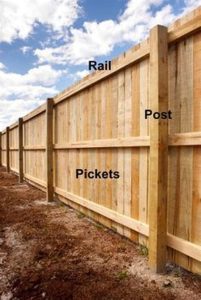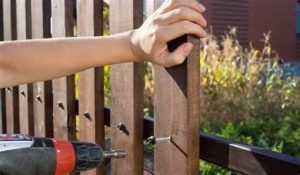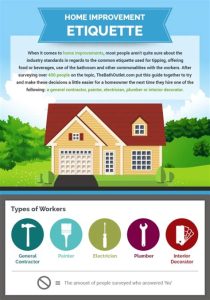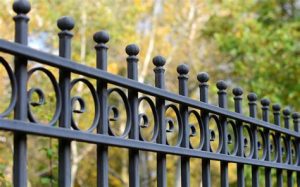Discover essential tips for choosing fence materials, measuring, prepping ground, selecting tools, and ensuring proper installation for your perfect fence project.Installing a fence around your garden not only enhances its aesthetic appeal but also provides essential protection for your plants from weather and wildlife. Whether you’re looking to create a safe space for pets, define your garden boundaries, or simply add a touch of charm, choosing the right fence is crucial. This blog post will guide you through the entire process, from selecting the ideal material that suits your style and needs, to meticulous measuring and planning. We’ll cover essential ground preparation techniques and the tools necessary for a smooth installation. Finally, you’ll find valuable tips to ensure your fence stands strong and serves you well for years to come. Get ready to transform your garden into an enchanting sanctuary!
Choosing the Right Fence Material
When it comes to installing a fence around your garden, selecting the right fence material is crucial for durability, aesthetics, and functionality. There are various materials available, each with its unique benefits and drawbacks. Below, we’ll discuss some of the most popular fence materials to help you make an informed decision.
- Wood: Classic and visually appealing, wooden fences provide a natural look and can be easily customized. However, they require regular maintenance to prevent rot and insect damage.
- Vinyl: Known for its durability and low maintenance, vinyl fences resist fading, decay, and pests. They come in various styles and colors, making them versatile for any garden theme.
- Chain Link: An economical choice, chain link fences are functional and allow visibility. They are ideal for containment but may not provide the desired privacy.
- Metal: Strong and long-lasting, metal fences, such as wrought iron or aluminum, offer security and can be very stylish. They often come at a higher cost but are worth the investment for longevity.
- Composite: Made from recycled materials, composite fences mimic the look of wood without the extensive maintenance. They are resistant to rot, decay, and damage from insects.
Consider your budget, the purpose of the fence, and your garden’s style when choosing the right fence material. Keep in mind the climate in your area, as it can affect the longevity and upkeep of different materials. For instance, wooden barriers might warp in humid conditions, while vinyl can become brittle in extreme cold.
Lastly, take into account the local building codes and homeowners’ association regulations, which can dictate certain aspects of fence installation. By weighing all these factors, you can choose the most appropriate fence material that not only meets your functional needs but also enhances the beauty of your garden.
Measuring and Planning for the Fence
When it comes to installing a fence around your garden, proper measuring and planning are crucial. Accurate measurements ensure that your fence fits perfectly within your desired area, preventing unnecessary material waste and costly adjustments later on.
Begin by determining the size of the area you want to enclose. Use a measuring tape to get the precise length and width. It’s important to consider any obstacles such as trees, shrubs, or pathways that may affect your fence line.
| Steps | Description |
|---|---|
| 1. Layout | Use string or marking paint to outline where the fence will be placed. |
| 2. Measure | Take accurate measurements of each side of the fence layout. |
| 3. Adjust | Make necessary adjustments for any obstacles encountered. |
After you’ve completed your layout and measurements, review the local zoning regulations. Some areas have restrictions on fence heights and styles, so it’s wise to check before buying materials.
Prepping the Ground for Installation
Before starting the actual fence installation, it’s crucial to properly prep the ground. This step will ensure that your fence is stable, durable, and looks aesthetically pleasing. Below are some essential tips that can help you prepare the ground effectively.
1. Clear the Area: Start by removing any debris, rocks, or vegetation in the area where the fence will be installed. This includes branches, leaves, and any other obstructions that might hinder the installation process. You can use a rake or shovel to make the area as clean as possible.
2. Check for Level Ground: It’s essential to ensure that the ground is level before installing your fence. If the ground is uneven, you might need to either fill low spots with soil or level out high spots. A level ground will help in maintaining consistent fence height and appearance.
| Tools Needed | Purpose |
|---|---|
| Shovel | To dig and remove dirt and debris |
| Rake | To level and smooth the ground |
| Post Level | To check the alignment of your fence posts |
3. Mark the Fence Line: Use stakes and string to outline the path of your fence. This will not only help you visualize the placement but also ensure that all posts will be installed in a straight line. Make sure to mark the locations for your fence posts, typically spaced apart according to the type of fence you’re installing.
4. Assess Soil Conditions: Knowing the type of soil you are working with is also vital. Sandy soil drains well but might require deeper post holes, while clay soil holds moisture, which could affect the stability of the posts. Opt for appropriate footings that will support your fence based on the soil conditions.
By following these tips for prepping the ground, you’ll set a solid foundation for the rest of your fence installation project. Proper preparation can save you time in the long run and tangibly improve the integrity of your new fence.
Selecting the Right Tools for the Job
Installing a fence around your garden is an important task that requires the right tools to ensure a smooth and successful project. Whether you’re a seasoned DIYer or a novice, having the appropriate tools will not only make your job easier but will also improve the quality of your fence installation.
- Post Hole Digger: This is crucial for digging holes for the fence posts. You can choose between a manual post hole digger or a powered auger, depending on the size of the job.
- Level: A level ensures that your fence is installed straight and looks professional. A torpedo level or a long level will work well.
- Measuring Tape: Accurate measurements are key to a successful fence installation. A measuring tape will help you ensure that your fence sections are the correct length.
- Hammer or Mallet: A hammer is useful for driving in nails or stakes, while a mallet is great for tapping the posts into the ground without damaging them.
- Wire Cutters: If you’re using chain link fencing, wire cutters are essential for cutting the wire to the desired length.
- Saw: A circular saw or hand saw may be required for cutting wood panels or posts to size.
By gathering the right tools beforehand, you can streamline the fence installation process and avoid unnecessary trips to the hardware store.
Always remember to wear protective gear like gloves, goggles, and sturdy footwear to ensure your safety while working with these tools. Investing in quality tools may also save you time and effort, contributing to an overall successful installation.
Tips for Proper Fence Installation
Installing a fence around your garden can be a rewarding project that enhances both the aesthetics and security of your outdoor space. However, ensuring the proper installation of your fence is vital to its longevity and effectiveness. Here are some practical tips to guide you through the process.
1. Plan Before You Dig: Prior to installation, make sure to carefully plan the layout of your fence. Use stakes and string to outline where the fence will go and measure distances. This step is crucial for ensuring a straight and even fence line.
2. Check Local Regulations: It’s important to verify if there are any local zoning laws or homeowners association rules regarding fence height and materials. Compliance with these regulations can prevent potential conflicts after installation.
3. Gather the Right Tools: A successful fence installation relies heavily on having the right tools. Ensure you have a post hole digger, level, measuring tape, and a mallet. Having these tools handy will make the installation process smoother.
In addition to necessary tools and planning, consider the weather conditions before starting your project! Avoid installation during wet or windy conditions, as this can affect the stability of your fence.
Finally, once your fence posts are in place, backfill the holes with concrete or soil for extra stability. Make sure to allow adequate time for any materials, like concrete, to set before continuing with further installation.
Frequently Asked Questions
Why is it important to install a fence around a garden?
A fence provides protection for your garden from animals and trespassers, helps define boundaries, and can enhance the aesthetics of your outdoor space.
What types of materials can be used for garden fences?
Common materials for garden fences include wood, vinyl, metal, and chain-link. Each material has its own benefits and suitability depending on your specific needs.
What is the ideal height for a garden fence?
The ideal height for a garden fence typically ranges from 4 to 6 feet. This height can effectively deter most common animals from entering your garden.
How can I ensure my fence stays durable over time?
To enhance durability, choose high-quality materials, apply protective coatings, and perform regular maintenance such as inspecting for damage and treating wood to prevent rot.
What are some tips for installing a fence around uneven terrain?
For uneven terrain, use adjustable fence posts, consider a stepped design for the fence, and take care to follow the natural contour of the land during installation.
Are there legal considerations or permits needed for installing a fence?
Yes, it’s important to check local regulations and homeowner association guidelines, as you may need permits or have restrictions regarding fence height and materials.
What additional features can enhance a garden fence?
You can enhance a garden fence with features such as trellises for climbing plants, decorative toppers, or security features like motion-activated lights.





